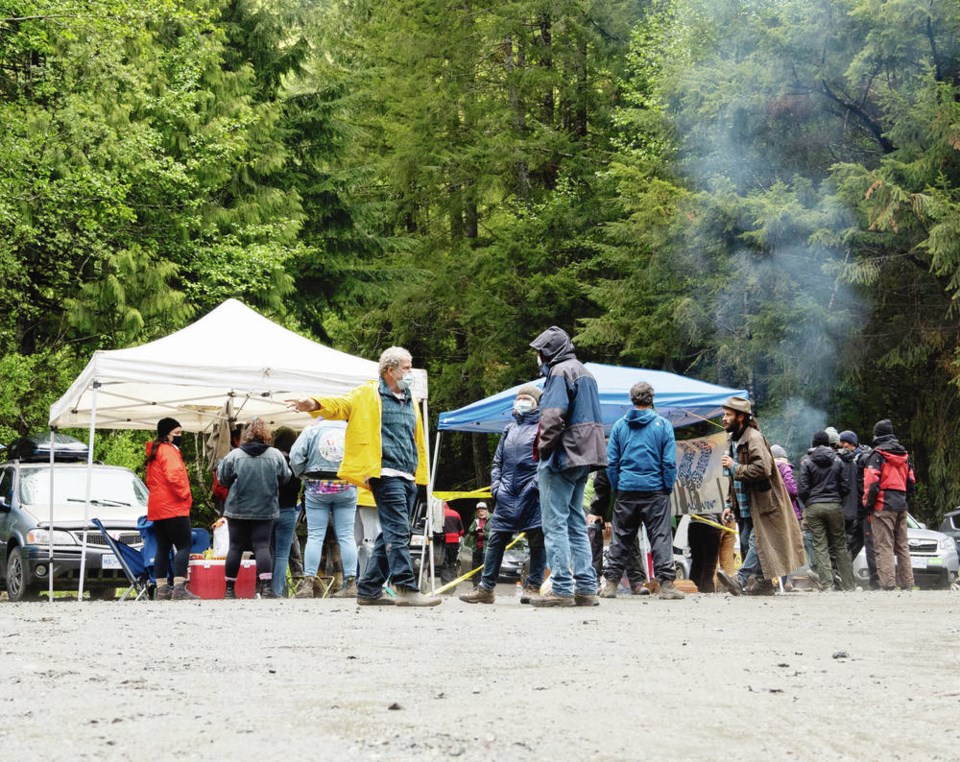History is repeating itself with the Fairy Creek blockade, the current struggle over the future of remaining intact old-growth forest on southern Vancouver Island. The RCMP moved in last week to enforce an April 1 court injunction restricting protesters’ access to the area.
Protesters have been blocking logging company Teal-Jones from building a road into its planned cut block in Tree Forest Licence 46 since last August.
It’s an age-old conundrum. How to balance short- and medium-term needs and wants against our future wellbeing one, two or three decades or seven to nine generations from now?
Humans have been weighing the pros and cons of near-term gains against potential delayed costs for eons. We likely started down that path around the time we started rubbing sticks together to start fires, painting pictures of critters on cave walls, and lashing pointy stones to sticks to hunt aurochs and fight off dire wolves.
Our ability to out-blackjack the future hasn’t improved appreciably since then.
Here in B.C., we’ve been staring at that same question writ large in our forests since at least the 1980s. The war in the woods over clearcutting in Clayoquot Sound saw protesters blockading forest roads for more than a decade. The protests peaked in 1993, when almost 900 people were arrested.
We may have been staring, but we weren’t seeing.
The time that has passed between the current and those earlier protests includes many missed opportunities. If B.C. had acted differently in the intervening years, we might not be in such straits today. If we’d chosen a path through the bush instead of the logging road taken, and had rated our diminishing old-growth for more than just its timber value, the current situation might have been avoided.
If we had taken a stronger stance with a longer view over the last 35 years, more of those big old trees and their associated and highly productive plant, critter and microbial communities and ecosystem services might still be around in 2021 to fight over.
Forests are more than 2 x 4s waiting to be processed. Intact forests — and most especially intact, old-growth forests — are complex functioning systems that control water tables, minimize flooding and ensure water is available during dry seasons.
They clean and filter water. They stabilize soil, helping to prevent landslides. They keep our streams, creeks and rivers cool, supporting salmon and other fisheries.
They better withstand insect and disease infestations, which means they also contain less dry fuel that feeds and leads to extreme wildfire events. It’s not that they don’t get infested and don’t burn — it’s that the infestations and fires tend to be less intense.
With B.C.’s mountainous terrain, old-growth forests maintain and protect the watersheds that supply many communities’ drinking water.
A recent study in the Canadian Journal of Forest Research that analysed how the intrinsic biases and weaknesses in how B.C.’s remaining old growth are assessed confirms provincial government claims that about one-quarter of our forests are old-growth.
However, the analyses also reveal that most of the area so designated actually comprises low-productivity forests, such as subalpine and bog forests. Less than one per cent is highly productive, complex old-growth, growing large trees.
This means that under the current assessment approach used, low-productivity ecosystems are overrepresented in protected forest, and B.C. has even less big-tree old-growth than we thought.
Successive governments since the Clayoquot protests have abdicated responsibility to future generations when they minimized our forests’ nontimber values in favour of fuelling jobs that relied on harvesting old forests and would, eventually, be running on empty for lack of remaining old forests. Last year, the current government committed to implementing all of the recommendations of the 2020 Old Growth Strategic Review. It’s a good sign, albeit much too long in coming.
But a commitment is nothing without plans, adequate funding and an implementation timeline — all of which we’re still waiting for.
And as we wait, the cutting continues.
Human time is grossly mismatched with forest time. If we plant a sapling today, it’ll be our seven-times-great grandkids who will see it when it is “old,” 150 years from now.
The dis-synchronicity between forest and election cycles is an order several magnitudes greater. The four-year election term limits vision to the short term. Whatever choices are made today, some other government — possibly even one made up of today’s Opposition — will have to deal with the consequences.
As will we. And our kids. And our seven-times-great grandkids.



